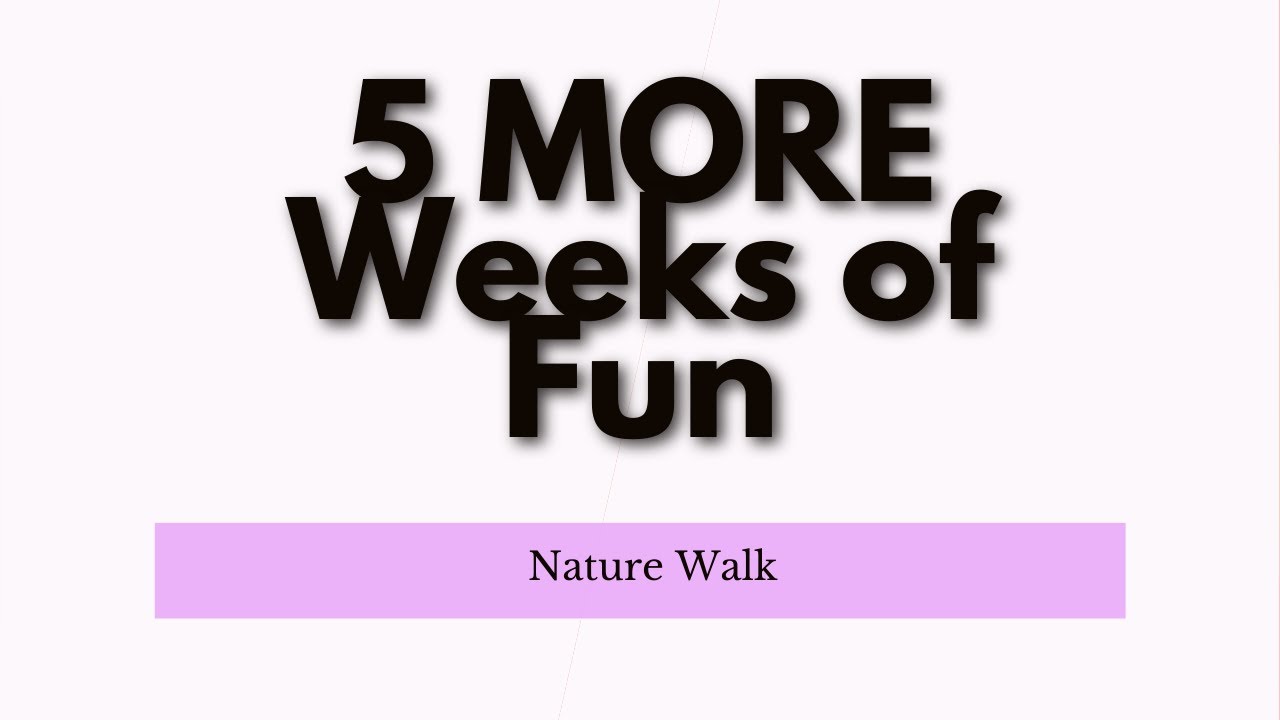Teaching Languages | 5 More Weeks of Low and No Prep Fun
Nature Walk
Exploring Language Through Nature: The Nature Walk Activity
Introduction
Hello, language teaching community! In the final segment of our enlightening language teaching video series, we delve into a wonderful activity known as the “Nature Walk.” This activity is particularly suitable for beginner-level classes and is a fantastic way to combine language learning with outdoor exploration. It involves students identifying and recording vocabulary in the target language during a nature walk, making it both an educational and refreshing experience.
Key Takeaways
- Outdoor Vocabulary Learning: Students identify words in the target language while on a nature walk.
- Collaborative Learning: Working in groups, students help each other understand and record new vocabulary.
- Creative Recap: Post-walk, students create their own nature scenes, consolidating their learning.
Step-by-Step Process
- Prepare Vocabulary List: Compile a list of vocabulary words in the target language that students are likely to encounter outdoors.
- Organize the Nature Walk: Arrange for students to go on a walk, equipped with clipboards or notepads for note-taking.
- Encourage Teamwork: Students work in groups to identify and note down vocabulary, drawing or making notes about their findings.
- Create Nature Scenes: After the walk, students draw their own nature scenes using the vocabulary they’ve learned.
“They have to try to identify, working together, what they know, what their group knows, what meanings they can negotiate.”
Resources Mentioned
- Clipboards/Notepads: Useful for students to take notes during the walk.
- Nature Vocabulary Lists: Lists of words in the target language related to nature.
Personal Best Advice
As someone deeply immersed in language education, I can attest to the effectiveness of combining language learning with real-world experiences. The Nature Walk activity not only enriches vocabulary but also instills a sense of connection to the natural world. It’s a perfect way to make language learning vivid and memorable.
FAQ
- How can I adapt this activity for urban settings?
- Focus on urban nature elements like plants in parks, birds, or weather phenomena.
- What if the weather is bad?
- Adapt the activity for indoor settings using pictures or videos of nature.
- Is this activity suitable for all ages?
- Yes, it can be adapted for any age group by adjusting the complexity of the vocabulary.
- How do I assess students through this activity?
- Assess based on their engagement during the walk and the accuracy and creativity of their nature scene drawings.
- Can this activity be modified for advanced learners?
- For advanced learners, include more complex vocabulary and encourage detailed descriptions.
Need more activities that work in any language? https://real-life-language.teachable.com/p/250-language-activities-for-language-classes
- For advanced learners, include more complex vocabulary and encourage detailed descriptions.
Looking for immersive, engaging, fun activities for your beginning Spanish classes? Love teaching with comprehensible input, and looking to add some ready-made effective lessons to your repertoire? Love teaching, but want work-life balance? Looking for 100s of materials, lessons, resources and ideas for student-centered activities?
https://real-life-language.teachable.com/p/immersive-beginning-spanish-lessons
If you teach languages, you probably love languages, too. However, our students don’t always love it so much. With all of the hard parts, who can blame them? In this free guide, I share 25 activities that can be used to teach any language and can be adapted to any level. Get yours here https://real-life-language.ck.page/200491762e
